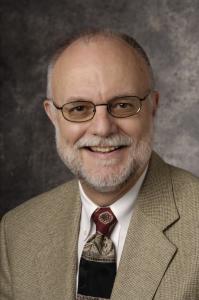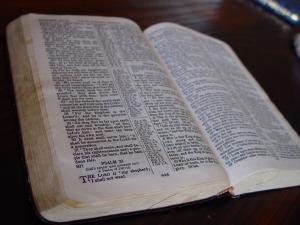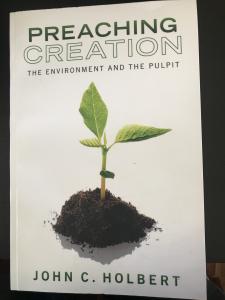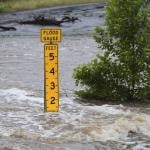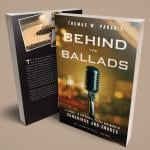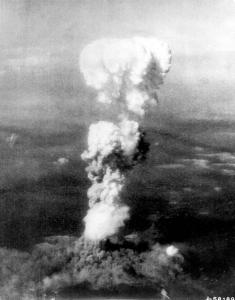 As often happens to me, I too soon found myself without something to read on a recent vacation. I leave on a trip and am convinced that I have sufficient material to last the whole of the time away. I am almost always wrong. My wife, Diana, warns me again and again that the long book I have with me simply will not fill my reading days as completely as I imagine. So, I often take some time in one city or another to search for a lovely bookstore that might hold promise of another great read. We just returned from Alaska, and sure enough I ran out even before we arrived on the ship for our cruise! I had to wait several days, until a port was sighted, to head into a town, desperate for a store that would satisfy my needs. In both Skagway and Ketchikan, I found independent bookshops, such stores that rarely exist in larger cities. In the former, I purchased Into the Wild, that bestseller by John Krakauer that I had not gotten around to reading, but it was far too short to last all that long, so in the latter city, our last stop on the 7-day cruise, I found something I had never heard of, The Firecracker Boys, by Dan O’Neill, first published in 1994, but I got it in a reprinted edition.
As often happens to me, I too soon found myself without something to read on a recent vacation. I leave on a trip and am convinced that I have sufficient material to last the whole of the time away. I am almost always wrong. My wife, Diana, warns me again and again that the long book I have with me simply will not fill my reading days as completely as I imagine. So, I often take some time in one city or another to search for a lovely bookstore that might hold promise of another great read. We just returned from Alaska, and sure enough I ran out even before we arrived on the ship for our cruise! I had to wait several days, until a port was sighted, to head into a town, desperate for a store that would satisfy my needs. In both Skagway and Ketchikan, I found independent bookshops, such stores that rarely exist in larger cities. In the former, I purchased Into the Wild, that bestseller by John Krakauer that I had not gotten around to reading, but it was far too short to last all that long, so in the latter city, our last stop on the 7-day cruise, I found something I had never heard of, The Firecracker Boys, by Dan O’Neill, first published in 1994, but I got it in a reprinted edition.
There is something especially delightful about coming across a book that is completely new to you, and that enthralls you nearly from the first page to the last. Such was this book for me. I was attracted by the subtitle: “H-Bombs, Inupiat Eskimos, and the Roots of the Environmental Movement.” Since I was lecturing on the cruise about climate change, I was hoping this book might open up some new vistas for me as I continue to inform myself about the most pressing issue the world now faces. Just last night, September 4, several of the Democratic candidates for President presented individually their plans to address this urgent summons to action that the climate now threatens all of us with. At last, millions of people are hearing what has been clear to some of us for decades; the climate is changing, we are the main drivers of that change, and we have very little time to make inroads to avoid at least some of the worst scenarios that have been predicted by numerous competent scientists.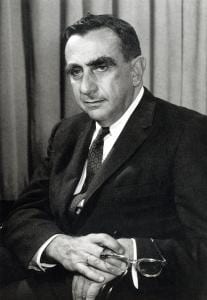
What does this book have to do with all that? Let me offer a brief summary of this book, and I think you will see just how important a book it is for all of us. The dangerous man in the book is Edward Teller, a brilliant if eccentric scientist, who worked for a time with the famous Manhattan Project at Los Alamos, NM in 1944-45, the project that produced the first atomic bomb, two examples of which were employed at the end of the Second World War to devastate the Japanese cities of Hiroshima and Nagasaki. From the very beginning of the project Teller had urged Robert Oppenheimer and his fabulous collection of many of the world’s greatest physicists, to abandon the search for a fission bomb and turn instead to a fusion bomb, a hydrogen bomb, a device that he knew would offer both more yield in explosive power and be cheaper to boot, since its central ingredient was in fact water. He pushed so hard at meeting after meeting that eventually he was relieved of a place on the project; even his life-long friend, Edward Bethe, who also had fled Nazi Germany, and was now a highly respected member of the Cornell University faculty, found that friendship strained to the breaking point since Teller would not relent one inch in his demand for the hydrogen bomb.
After the war ended, Teller became perhaps the most prominent and influential atomic physicist in the world, and given his rising status, he developed ideas that in retrospect sound loony and finally wildly insane. He decided that atomic bombs were the major construction tool that the world had been seeking. In the face of the Suez Canal crisis of 1956, an idea was formed by Teller and others that a series of nuclear explosions might be used to “dig” another canal right across the state of Israel from the Gulf of Aqaba to the Mediterranean Sea, thus bypassing the Suez Canal, and taking power away from General Nassar and his Egyptian attempts to isolate Israel by way of a canal blackmail; cease support for the Jewish state or risk no more passage through Suez. Well- placed nuclear devices would solve that problem, reasoned Teller. Issues of radioactive fallout, the central and long-term horrors of the Japanese bombs, were said to be of minimal concern since a “clean” nuclear bomb was in development and would very soon be available.
But Teller, being rebuffed at this juncture by any number of skeptics, continued a search for an appropriate location to test his absolute conviction that nuclear bombs, especially hydrogen ones, were the wave of the future and would soon be able to shape a new world. If you do not like that mountain that blocks your way to larger and more lucrative development, Teller’s bombs could quickly erase that pesky mountain and pave the way for increased concentrations of human habitation. At the end of his search for an experimental site, Teller and his associates settled on a remote spot in Alaska, north of the Arctic Circle, at a place near Point Hope (rich ironies?), a peninsula, jutting out into the Chukchi Sea. They named the project Chariot, and proposed to blast a harbor and port there, first by using a 2.2 Megaton hydrogen bomb to dredge the harbor, but then deciding that they did not need so much tonnage, and reduced the blasts to one rather smaller one for the harbor and four even smaller blasts to shape the harbor entrance. Exactly why a harbor was needed in such a spot, ice-bound for at least 9 months of the year and hundreds of miles from any possible sources of minerals like coal and oil (the north slope oil discovery was nearly two decades in the future) was never fully explained. It became all too clear that there was only one reason for this project, and that was to demonstrate the feasibility of nuclear bomb usage for huge construction projects.
Though Teller and his cohorts attempted to show that this area of Alaska was in fact nearly devoid of human beings, there was a long-time village of some 200 Eskimos not 35 miles from the blast site. And this village lived almost exclusively on the area’s caribou herds. It was quickly determined by two University of Alaska biologists that these caribou lived only off the lichen in the area, and that the lichen survived only on air-born material, carried by the wind and moisture from the seas. In other words, if an atomic blast, or five, were detonated in the area, the lichen would inevitably become covered in radioactive fallout, the caribou would eat this lichen and themselves become riddled with radioactivity, and the Eskimos who ate the irradiated caribou would shorten their lives appreciably as studies by 1959 had shown among the Japanese who had been exposed to radiation in the 1945 atomic explosions.
Teller and others tried to push back against these studies by claiming only clean bombs would be used, despite the reality that such bombs did not then exist and neither do they now. And they claimed the wind would inevitably blow the radioactive particles out to sea, despite that fact that the prevailing winds in the area were almost exclusively west to east. And then they suggested that if the bombs were buried deep enough, that would reduce considerably the radioactive material that would be blasted up from the explosions, despite the findings of recent deeply buried Nevada tests that showed huge amounts of irradiated soil thrown high into the atmosphere and blown hundreds of miles from the test site. In short, what Teller and his fellow scientists were trying to sell was a fanciful bill of goods, and the Eskimos, along with the scientists on the ground with them were not buying.
It is to be noted that Teller was at this time and for several more years receiving millions from the Atomic Energy Commission to pursue these bizarre ideas of nuclear dredging. Dwight Eisenhower, followed by John Kennedy, signed off on the notion, hoping that Teller could demonstrate the possibility of such nuclear engineering. The fact that I knew absolutely nothing of this monstrous and hare-brained scheme, indicates, thank God, that it never reached the demonstration stage. In fact, as the plan gained a wider audience, any number of influential people began to see what was at stake here, and proceeded to fight against the idea in multiple ways. Barry Commoner, called by many the father of modern environmentalism, began his work as watchdog over the world’s environment with his negative reactions to this project. Commoner spoke at my 1968 Grinnell College graduation ceremony.
Thus, did science attempt to test its power without any sense that human beings and plants and animals would inevitably be in the way and would suffer irremediable harm in the process. Do we not face many of the same problems in 2019? The Trump administration has once again raised the specter of an enormous open-pit copper and gold mine in Alaska, nearly a decade after President Obama stopped the project with the help of the courts. The so-called Pebble Mine would spread its vast area and its runoff slag into one of the world’s finest salmon habitats. And Trump’s crew has again raised the notion of logging the Alaskan Tongas forest, where some of the old growth trees are as much as 800 years old. One does not replace such a forest merely by planting new trees—800 years is a very long time.
The Firecracker Boys is both a scary and a salutary read. It describes science run amok, but it also plots important human pushback to scientists whose work was too long based on developmental models and less on environmental ones. In a day when species go extinct each day, where our seas and our soils are degraded by the lusty search for petroleum products, products that lace our atmosphere with CO2, heat our planet, and threaten all of us with a horrendous future, we are called to fight back against those who would only exploit the earth, treating it like a kind of warehouse of goods for us, instead of seeing it as an interconnected whole, given to us by a beneficent God for us to partner with and protect for future generations. I found this wonderful book as another call to action; I hope you will find it so for yourself, too.


